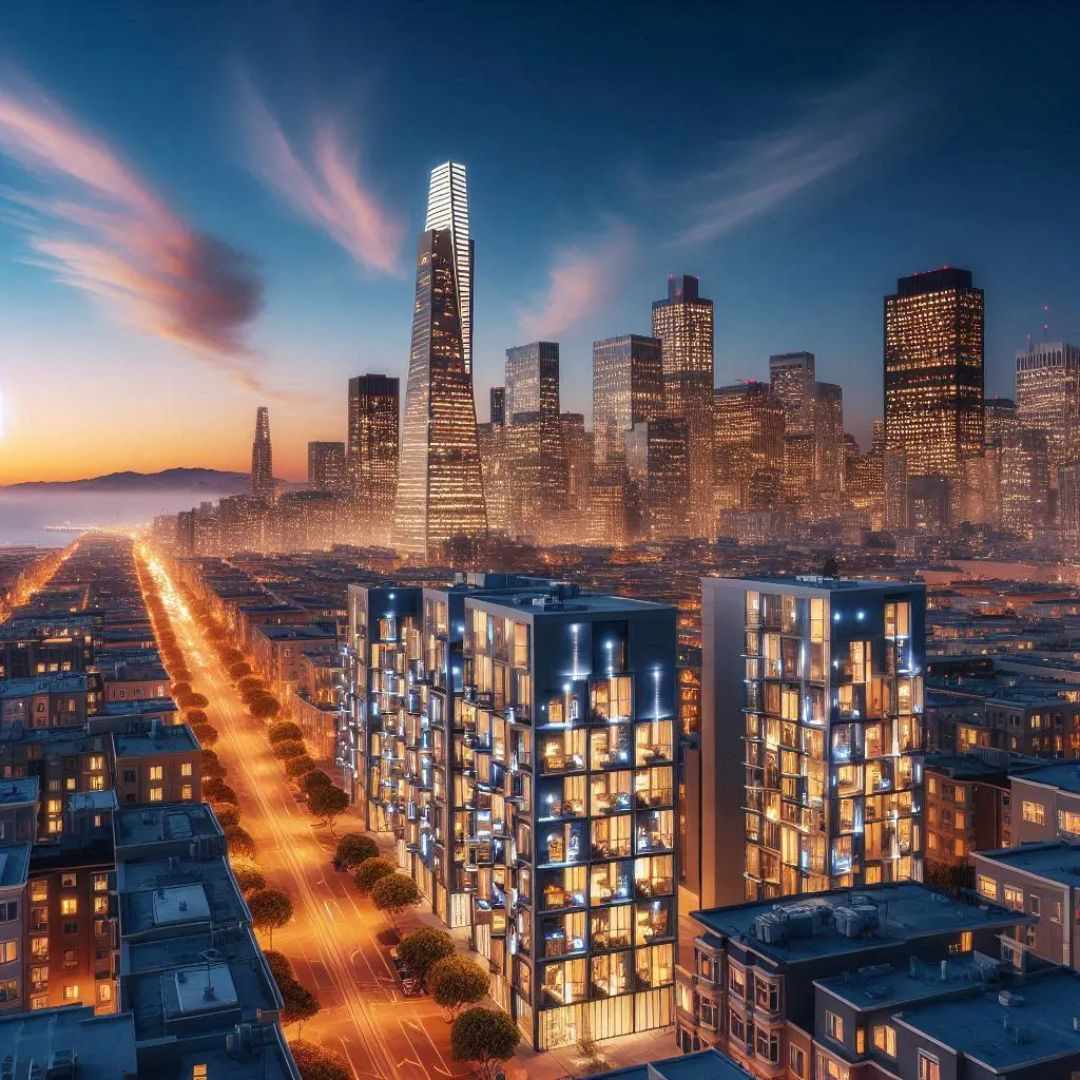If you own a commercial building in San Jose, a quiet shift in energy rules could now affect your bottom line. A new wave of energy efficiency regulations is reshaping what it means to operate within compliance—and it starts with San Jose’s Energy Audit and Retro Commissioning requirements. These laws are no longer just suggestions; they’re mandatory for many property owners. For example, commercial offices over 50,000 square feet must now complete a certified energy audit and retro commissioning review. Non-compliance can result in city-issued fines or permitting delays, cutting directly into your operating margins. Did you know? Buildings that meet compliance standards often see up to 15% in operational savings due to improved energy performance.
San Jose’s commercial building energy audit rules now demand not only compliance but smart decision-making. Retro Commissioning—evaluating and improving existing systems—is no longer just about energy savings; it’s about legal responsibility and maintaining asset value. While many owners know what an energy audit is, fewer understand how these updated building regulations affect their day-to-day costs. This blog will walk you through what’s changed, why it matters, and how you can stay ahead. Plus, you can use our Energy Audit Instant Pricing Tool—just enter your building’s square footage or system type to receive a rapid cost estimate and start streamlining your compliance today.
How San Jose’s Energy Audit and Retro Commissioning Laws Affect You
What’s Required Under the New Rules
San Jose’s updated energy compliance laws apply to non-residential buildings that are 50,000 square feet or larger, excluding parking areas. If you own or manage a commercial office, retail complex, warehouse, or mixed-use property of this size, you are now legally required to comply with the city’s building performance standards. The central requirements include conducting an ASHRAE Level 2 Energy Audit and a Retro Commissioning (RCx) evaluation.
An ASHRAE Level 2 Audit goes beyond basic utility bill analysis. It includes on-site inspections, load profile assessments, and financial analysis of recommended energy improvements. The audit must be performed by a qualified professional—typically a certified energy auditor or mechanical engineer with direct experience in large commercial systems.
The Retro Commissioning (RCx) process targets how your building’s existing systems are actually performing. Over time, systems like HVAC, lighting, and controls drift from their intended performance, often leading to wasted energy and poor occupant comfort. RCx identifies these inefficiencies and optimizes the systems without requiring major equipment replacements.
To remain in compliance, owners must:
Hire a certified energy professional
Complete both the audit and RCx process
Document all findings and improvements
Submit reports to the City of San Jose by the assigned deadline
In addition, if deficiencies are found during commissioning, owners are expected to implement no- and low-cost corrective actions within a specific time frame. San Jose may also require periodic updates or re-audits depending on your building type or energy performance trend.
How It Affects Operating Budgets and Capital Planning
At first glance, the new energy audit and RCx requirements may seem like a regulatory expense. But when implemented properly, they can actually reduce long-term operational costs and help owners make smarter capital decisions. Energy waste is often invisible—hidden in outdated settings, poor calibration, or legacy systems. This process brings that waste to light and gives you a plan to correct it.
Immediate Budget Impacts
Let’s talk numbers. A typical ASHRAE Level 2 audit costs between $4,000 and $15,000, depending on building size and system complexity. Retro Commissioning may cost an additional $0.10–$0.30 per square foot. This means that a 100,000 sq. ft. building could spend $10,000–$30,000 to complete the process.
These expenses often include:
Engineering and consulting fees
Field technician time for on-site inspections
Temporary operational adjustments during the audit
However, utility rebates and incentive programs can offset a significant portion of these costs. Local programs through BayREN or PG&E may reimburse up to 70% of RCx or audit expenses if specific recommendations are implemented.
Long-Term ROI Benefits
Once your audit is complete and RCx recommendations are adopted, operational savings can begin within weeks. Optimized control sequences, improved scheduling, and minor mechanical adjustments often reduce energy bills by 10% to 20% annually. In larger facilities, that can translate to tens or even hundreds of thousands of dollars in annual savings.
In addition to direct cost savings, RCx can:
Extend the lifespan of HVAC systems
Reduce emergency maintenance calls
Improve indoor air quality, which is increasingly important in post-COVID leasing markets
Also, integrating audit findings into your long-term capital planning ensures that future equipment upgrades are data-driven and timed for maximum return on investment.
Strategic Implications for Asset Value
Today’s commercial real estate market increasingly favors buildings that perform well—not just financially, but also in terms of energy efficiency and sustainability. Investors, tenants, and lenders now expect visibility into building performance, especially in forward-looking markets like San Jose. These laws aren’t just compliance issues—they’re asset management tools.
Higher Market Appeal and Valuation
Energy-efficient buildings tend to attract better tenants, achieve higher occupancy rates, and face fewer lease turnover issues. Many corporate tenants have sustainability mandates that require them to lease only from buildings with environmental certifications or documented energy performance. By staying compliant, you position your asset as future-ready.
Appraisers are also beginning to factor energy performance into valuation models. A property that operates 15% more efficiently than peers can justify a lower operating expense ratio, improving Net Operating Income (NOI) and, in turn, the appraised value. Likewise, buyers and investors may discount the purchase price of buildings that are non-compliant due to the cost and risk of bringing them up to standard.
Insurability and Risk
Insurance providers are starting to weigh operational risk into underwriting. A well-commissioned, energy-efficient building with documented maintenance and performance history presents a lower liability profile, especially in systems prone to failure like HVAC or electrical panels. This can improve your ability to negotiate favorable policy terms.
In short, energy compliance isn’t just about avoiding fines—it’s about positioning your building as a stronger, more resilient asset in a competitive market.
Navigating Compliance: What Property Managers Need to Know
For commercial property managers, understanding and managing this compliance process can be the difference between seamless operations and costly delays. San Jose has published a timeline that phases in requirements based on building size, starting with the largest facilities. Managers must familiarize themselves with these deadlines and plan proactively to avoid last-minute complications.
Step-by-Step Compliance Workflow
Here’s how to stay ahead:
Assess your building portfolio – Identify which properties are subject to the new rules.
Schedule early – Begin the audit and RCx process months before the deadline to avoid scheduling conflicts with contractors and engineers.
Choose a qualified team – Work only with certified energy professionals who understand San Jose’s documentation requirements.
Document everything – Save audit reports, RCx findings, and proof of corrective actions in an organized, digital format.
Use online tools – Tools like the Energy Audit Instant Pricing Tool give you instant access to cost estimates so you can budget quickly and plan accurately.
Property managers should also coordinate with building engineers and facilities staff to ensure access to mechanical rooms, controls, and historical energy data. The more prepared your team is, the more efficiently the audit and commissioning can be completed.
💡 Reminder: Use San Jose’s online portal to upload compliance documents. Missing or incomplete submissions can delay approval or trigger compliance enforcement notices.
What Happens If You Don’t Comply
Non-compliance with San Jose’s energy audit and retro commissioning laws carries serious financial and reputational consequences. These regulations are enforceable under the city’s Building Performance Ordinance, and failure to comply by your building’s assigned due date may result in escalating penalties.
Legal and Financial Ramifications
Fines start at several hundred dollars per day, depending on your building’s size and how long the violation continues. Repeat violations or extended delays can lead to larger administrative fines or a lien placed on the property. Additionally, the city may withhold or delay building permits, tenant improvement approvals, or occupancy certificates.
Non-compliance can also be made public. San Jose may maintain a public-facing registry of buildings that have not met compliance standards, which can impact leasing efforts or investor interest. From a risk management perspective, this status can raise red flags during due diligence, asset sales, or refinancing.
Long-Term Strategic Cost
Beyond immediate penalties, failure to comply could place your building at a disadvantage in future regulatory cycles. California is advancing toward stricter carbon reduction and performance-based energy codes. Buildings flagged now for non-compliance may be required to undergo additional scrutiny or corrective mandates in later phases.
Put simply, non-compliance today could snowball into larger regulatory, operational, and financial burdens in the near future.
Take Control of Compliance and Cost Savings
San Jose’s energy efficiency laws are more than city mandates—they’re opportunities to save money, boost property value, and future-proof your building. We’ve unpacked what’s required, what it costs, and how it impacts everything from your maintenance schedule to your asset’s market appeal. Whether you're managing a single office or a full portfolio, staying compliant means more than avoiding fines—it’s about making smarter decisions that pay off long-term.
Don't wait until you're facing a deadline or penalty. Use our Energy Audit Instant Pricing Tool to get a fast, customized estimate based on your building’s size and systems. It’s the easiest way to plan ahead, budget with confidence, and stay one step ahead of San Jose’s evolving energy rules. Try the tool now—and turn compliance into a competitive advantage.
VertPro.com offers tools and services to help property owners and managers improve building energy efficiency and meet regulatory standards. Whether you're looking for instant pricing on energy audits, need support with benchmark compliance, or want to explore available building upgrade options, VertPro® provides user-friendly technology solutions to simplify the process. Their platform helps ensure adherence to over 60 Energy Benchmarking and Efficiency Laws across the country.
Energy Audit Instant Pricing Tool. Gain rapid, precise energy audit cost estimates. Streamline compliance and reduce expenses today.

















Write a comment ...